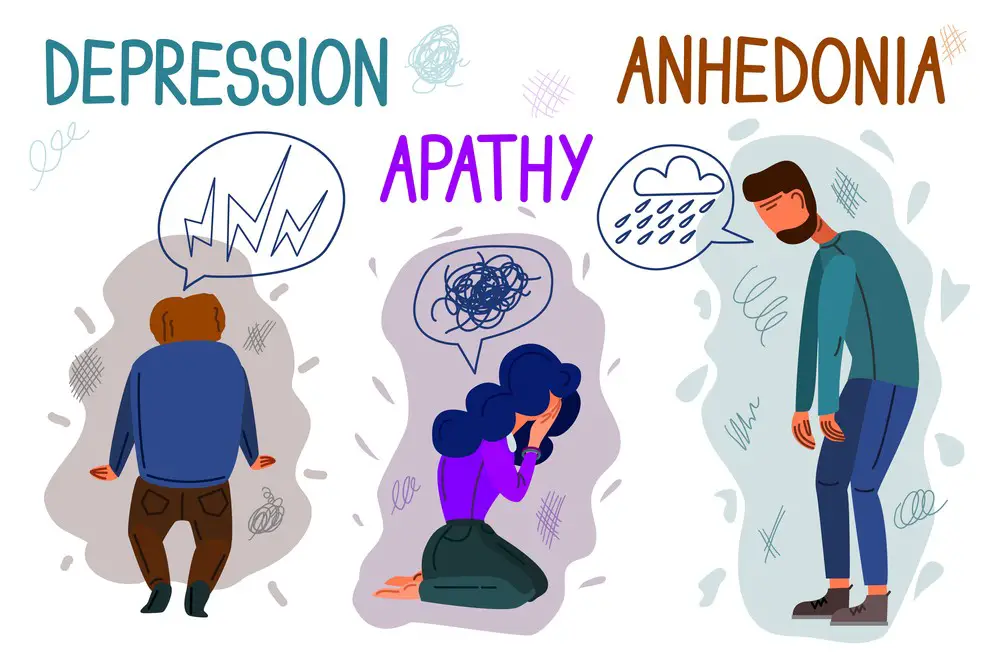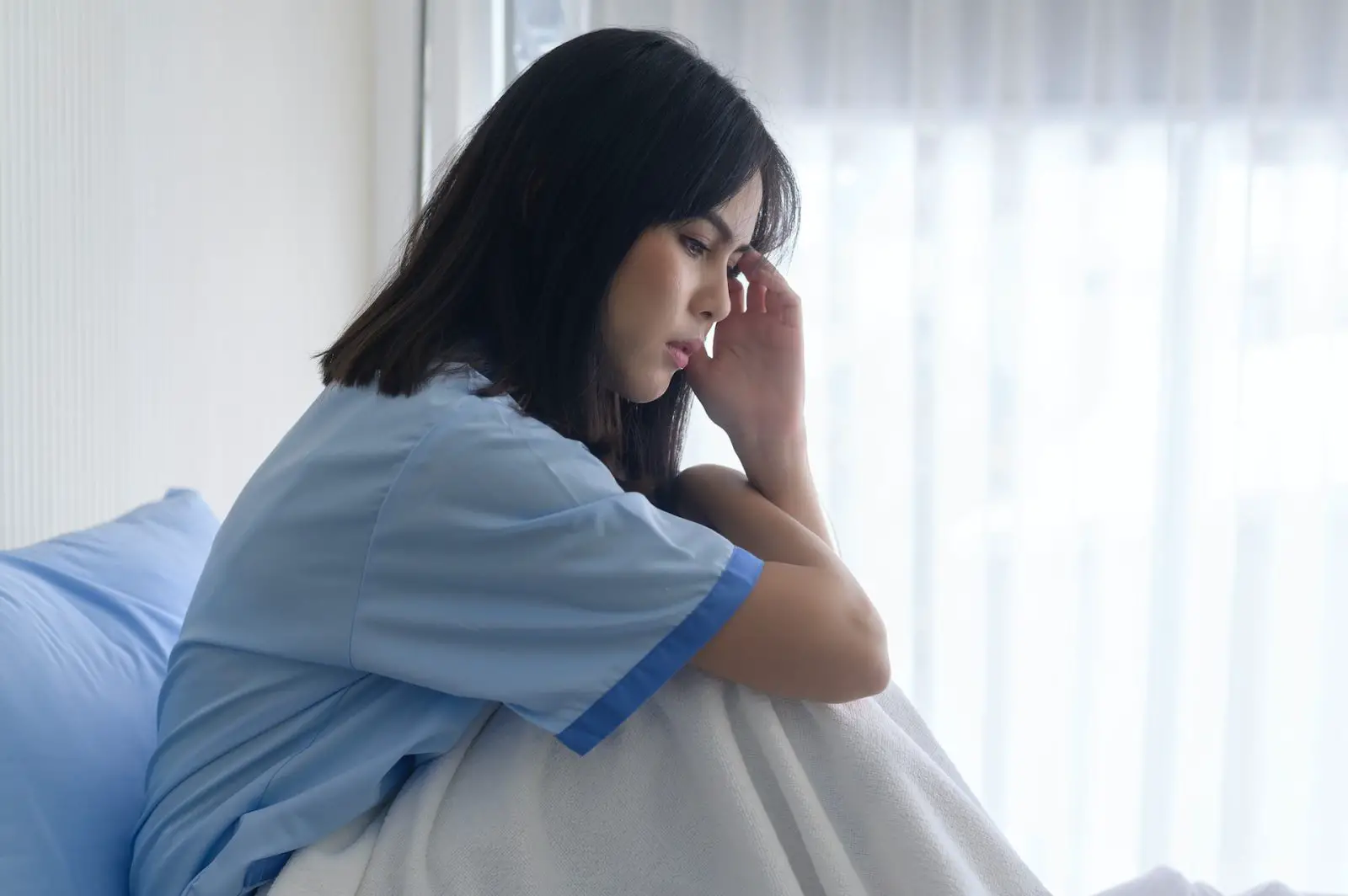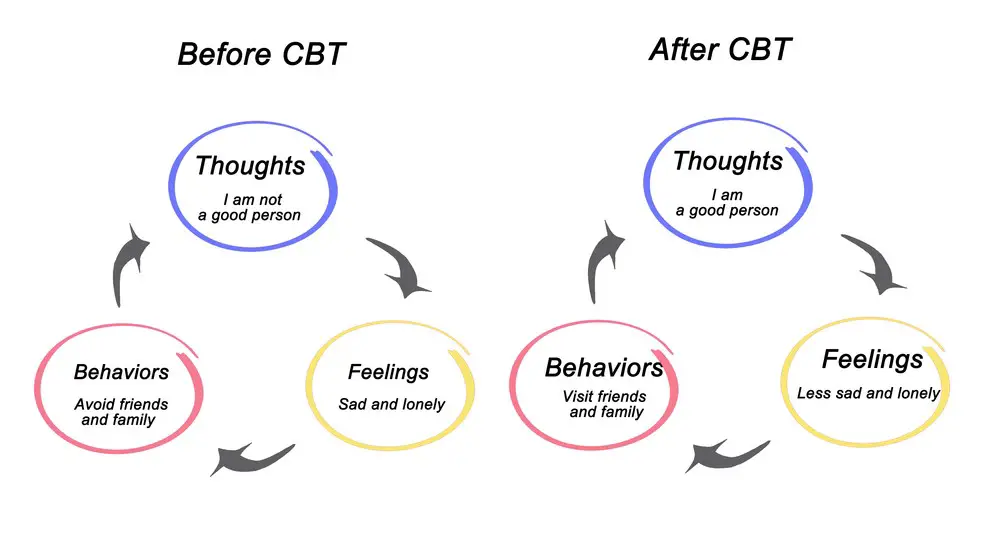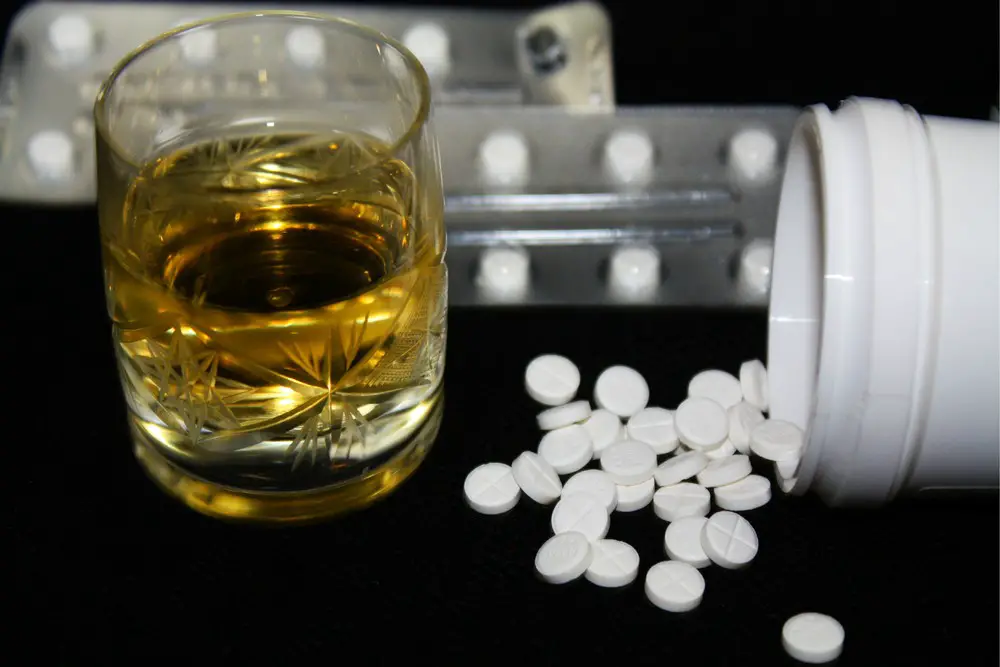As a BetterHelp affiliate, we receive compensation from BetterHelp if you purchase products or services through the links provided
Inpatient depression treatment is a comprehensive and often life-changing approach for individuals suffering from severe depression. It offers a structured and supportive environment where patients receive consistent supervision and intensive therapy, allowing them to focus solely on their recovery. For many, inpatient treatment is crucial in breaking the cycle of debilitating depression and regaining control over their mental health.
The treatment begins with a thorough evaluation to identify the patient’s needs and tailor a personalized plan to address those challenges. A multidisciplinary team of professionals, including psychiatrists, psychologists, therapists, and nurses, provide round-the-clock patient care in a safe and comfortable setting. This enables individuals to delve deep into the roots of their depression and develop coping skills and strategies to maintain long-term mental health stability.
Key Takeaways
- Inpatient depression treatment provides a structured, supportive environment for individuals with severe depression.
- A comprehensive evaluation and personalized plan are crucial components of the treatment process.
- Multidisciplinary care from professionals helps patients develop coping skills for long-term mental health stability.
 Understanding Depression
Understanding Depression
Types of Depression
There are several types of depression, which are categorized based on their severity and duration. Some common types include:
- Major Depressive Disorder (MDD): A severe form of depression that lasts at least two weeks and disrupts the ability to work, study, eat, and sleep.
- Persistent Depressive Disorder (PDD): A chronic form of depression lasting at least two years. It may be less severe than MDD, but it still significantly affects one’s quality of life.
- Bipolar Disorder: Also known as manic-depressive illness, is characterized by episodes of depression and mania (extremely elevated mood).
- Seasonal Affective Disorder (SAD): A type of depression that occurs during a particular season, most commonly in winter.
Symptoms of Depression
Depression symptoms can manifest in various ways, including:
- Persistent feelings of sadness, hopelessness, or pessimism
- Loss of interest or pleasure in activities once enjoyed
- Changes in appetite or weight
- Sleep disturbances, such as insomnia or oversleeping
- Fatigue or lack of energy
- Difficulty concentrating or making decisions
- Physical symptoms, such as headaches or stomachaches
- Suicidal thoughts or attempts
Causes and Risk Factors
Depression is a complex mood disorder with no single cause. Several factors may contribute to its development, such as:
- Genetics: A family history of depression increases the risk.
- Brain chemistry: Imbalances in neurotransmitters, the chemicals responsible for mood regulation, may play a role.
- Hormones: Hormonal changes, particularly during pregnancy or menopause, can trigger depression.
- Life events: Traumatic or stressful experiences, such as the death of a loved one, divorce, or job loss, may increase the risk.
- Medical conditions: Chronic illnesses, such as diabetes or cancer, can contribute to depression.
- Substance abuse: Alcohol and drug use can exacerbate depressive symptoms or even cause them.
Recognizing and understanding the types, symptoms, and causes of depression are crucial steps toward seeking appropriate treatment and support. Early intervention can significantly improve one’s mental health and overall quality of life.
 Inpatient Depression Treatment
Inpatient Depression Treatment
Evaluation and Diagnosis
Inpatient depression treatment begins with a thorough evaluation and diagnosis by a skilled psychologist and other mental health professionals. They assess the patient’s symptoms, medical history, and any co-occurring disorders to determine the most appropriate treatment plan. This evaluation may include interviews, questionnaires, and diagnostic tests.
Treatment Methods
In an inpatient depression treatment setting, various evidence-based therapies and interventions address the patient’s mental health needs. These may include:
- Cognitive Behavioral Therapy (CBT): A talk therapy that focuses on changing negative thought patterns and behaviors.
- Dialectical Behavior Therapy (DBT): A therapeutic approach that emphasizes emotional regulation and interpersonal skills.
- Interpersonal Therapy (IPT): A short-term therapy that targets relationship issues contributing to depression.
- Psychodynamic Therapy: A therapy that explores unconscious thoughts, feelings, and motives affecting depression.
- Group Therapy: A collective setting where patients discuss their personal experiences, share coping strategies, and provide mutual support.
In addition to therapy, medication management may be incorporated into the treatment plan to alleviate depressive symptoms. Antidepressants are commonly prescribed, such as selective serotonin reuptake inhibitors (SSRIs) and serotonin-norepinephrine reuptake inhibitors (SNRIs).
Treatment Team
The treatment team in an inpatient depression treatment facility consists of an interdisciplinary group of mental health professionals, including psychologists, psychiatrists, nurses, counselors, and social workers. Their primary goal is collaborating and providing comprehensive care to support the patient’s recovery journey. Regular meetings are held to review progress, adjust treatment plans, and ensure the best possible outcomes for the individual in their care.
Treatment Approaches
Medication Management
In inpatient depression treatment, medication management plays a crucial role. It involves carefully selecting, prescribing, and monitoring medications to ensure their optimal effectiveness. The most common medications used include antidepressants, such as selective serotonin reuptake inhibitors (SSRIs) and serotonin-norepinephrine reuptake inhibitors (SNRIs), which help regulate mood.
- SSRIs: fluoxetine, sertraline, escitalopram
- SNRIs: duloxetine, venlafaxine, desvenlafaxine
Healthcare professionals work closely with patients to track their progress and adjust medications as needed. This collaborative approach ensures that the medications prescribed are well-suited for each individual patient.
 Psychotherapy
Psychotherapy
Psychotherapy is another fundamental component of inpatient depression treatment. It refers to various therapeutic techniques used to facilitate self-awareness, the processing of emotions, and the development of healthier coping mechanisms.
One widely-utilized approach is cognitive-behavioral therapy (CBT). CBT focuses on identifying and challenging negative thought patterns and behaviors contributing to depression. Patients learn to replace these thought patterns with healthier, more constructive ones through CBT.
Alternative Treatments
In addition to medication management and psychotherapy, various alternative treatments may be included in inpatient depression treatment to complement these established approaches. These options can enhance the overall recovery process and may include the following:
- Electroconvulsive Therapy (ECT): a procedure that uses electrical currents to stimulate nerve cells and alleviate severe depression symptoms
- Transcranial Magnetic Stimulation (TMS): a non-invasive technique that involves stimulating specific brain regions using magnetic fields
- Mindfulness-Based Therapies: incorporates meditation and other mindfulness techniques to promote self-awareness and emotional regulation.
- Art and Music Therapy: uses creative expression as a form of non-verbal communication to explore emotions and foster healing
Through these various treatment approaches, inpatient depression treatment programs aim to provide comprehensive and personalized care to promote recovery and improved well-being for each patient.
Specialized Treatments
Family Therapy
Family therapy is a valuable approach to treating depression, as it addresses the relationships and dynamics within the family unit. This treatment method can help foster a supportive environment, improve communication, and resolve conflicts. Some topics discussed during family therapy sessions may include:
- Developing coping strategies
- Identifying triggers and patterns
- Learning effective communication skills
Families can better understand and assist their loved ones through recovery by working on these areas.
 Group Therapy
Group Therapy
Group therapy offers a unique environment for individuals with depression to share experiences, engage in peer support, and learn from others experiencing similar challenges. During group sessions, participants can:
- Practice social skills
- Gain perspective on their own experiences
- Build connections with others facing similar issues
These benefits can contribute to an individual’s overall progress in managing their depression.
Treatment-Resistant Depression
For some individuals, traditional treatments, like therapy and medication, may not effectively alleviate depressive symptoms. In these cases, treatment-resistant depression may be present. Alternative treatments that can be considered include:
- Electroconvulsive therapy (ECT): A procedure that utilizes electrical currents to stimulate brain cells
- Transcranial magnetic stimulation (TMS): A non-invasive technique applying magnetic fields to stimulate nerve cells
Both ECT and TMS are successful in some cases, but their application should be carefully discussed with a healthcare professional.
Complementary Therapies
Art Therapy
Art therapy is a popular complementary treatment option for those with depression. Patients engage in various art-related activities, such as drawing, painting, and sculpting, to express their emotions and process their experiences. This non-verbal communication can help individuals who struggle to discuss or articulate their feelings. Trained art therapists guide patients during sessions and assist in interpreting and understanding the emotions and thoughts represented in their artwork.
Equine Therapy
Equine therapy, or horse therapy, utilizes interactions between patients and horses to foster emotional and psychological growth. It is an experiential therapy, meaning participants learn through hands-on, immersive experiences. Equine therapy can help individuals with depression by providing opportunities to develop trust, assertiveness, interpersonal skills, and increased self-awareness. This therapeutic approach may also reduce stress, boost mood, and promote emotional and mental well-being.
Acupuncture
Acupuncture is a traditional Chinese medicine technique involving the insertion of thin needles into specific points on the body. It is believed to restore balance in the body and promote physical, emotional, and mental healing. Some studies suggest that acupuncture may effectively reduce depressive symptoms, particularly when combined with conventional treatments, such as medication and psychotherapy. It is crucial to seek treatment from a licensed acupuncturist with experience in treating depression to ensure the highest standards of care and effectiveness.
Dealing with Co-Occurring Disorders
 Substance Abuse Disorders
Substance Abuse Disorders
Inpatient depression treatment centers often encounter patients with co-occurring substance abuse disorders. It is crucial to address both issues simultaneously, as they can be interdependent and exacerbate one another. To tackle this, clinicians offer integrated treatment that combines mental health and substance abuse interventions. This might include therapy, medication management, and support groups designed to help patients learn healthier coping mechanisms and replace maladaptive behaviors with positive ones.
Mood Disorders
Another common co-occurring problem is mood disorders. When treating inpatient depression, practitioners must be aware of other present mood disorders, such as bipolar disorder or anxiety. The treatment plan should be tailored to fit each patient’s unique needs. The approach may involve multiple interventions, such as:
- Cognitive-behavioral therapy (CBT)
- Dialectical behavior therapy (DBT)
- Acceptance and commitment therapy (ACT)
These techniques help patients better understand their emotions, develop self-awareness, and learn effective strategies for managing their mood disorders.
Behavioral Addiction
Behavioral addictions, such as gambling, food, or internet addiction, can be challenging to manage alongside depression. An inpatient treatment center will address behavioral addictions by:
- Assessing the severity and impact of the addiction on the patient’s life
- Creating individualized treatment plans
- Implementing evidence-based therapeutic approaches, such as CBT or psychodynamic therapy
Using a comprehensive and integrated approach, inpatient depression treatment programs can effectively treat co-occurring disorders and set patients on a path to recovery.
Possible Complications
Suicidal Thoughts
Inpatient depression treatment aims to provide a safe, structured environment for individuals with severe depression. However, suicidal thoughts may still arise for some patients during their stay. The treatment team must monitor and address these thoughts to ensure the patient’s safety. The team will provide resources and interventions like:
- Regular assessments of suicide risk
- One-on-one therapy sessions
- Frequent communication with the patient
Preventing possible complications related to suicidal thoughts requires collaboration between the patient, their family, and the treatment team.
Psychosis
Another potential complication during inpatient depression treatment is the emergence of psychosis. This can occur in cases of severe depression or due to certain medications. Psychotic symptoms may include:
- Delusions
- Hallucinations
- Cognitive difficulties
To manage psychosis effectively, the treatment team may:
- Adjust the patient’s medications
- Implement therapeutic techniques specific to psychotic symptoms
- Closely monitor the patient’s progress
In conclusion, possible complications like suicidal thoughts and psychosis must be addressed in inpatient depression treatment. By monitoring and managing these potential issues, the treatment team can help patients on their journey toward recovery.
Making Lifestyle Changes
Fitness and Wellness
Regular exercise and a healthy diet play significant roles in managing depression. Incorporating regular physical activity into one’s routine can help alleviate symptoms and improve overall mental health. A well-balanced diet that includes a variety of fruits, vegetables, lean proteins, and whole grains can improve mood and energy levels.
- Develop a consistent exercise routine, aiming for at least 30 minutes of moderate activity most days.
- Consider enjoyable activities, such as walking, dancing, or swimming.
- Focus on a nutrient-dense, well-balanced diet
- Include stress-relieving activities like yoga or meditation
Relationship Management
Maintaining healthy relationships is integral to one’s mental well-being. Individuals experiencing depression may find it helpful to discuss their feelings with trusted friends, family members, or mental healthcare professionals. Building a supportive network can provide encouragement and a valuable source of emotional resilience.
- Openly communicate with loved ones about emotions and needs
- Prioritize spending time with supportive, understanding people
- Participate in support groups or therapy sessions
Work-Life Balance
Achieving a proper work-life balance is essential for managing depression. Monitoring and adjusting personal and professional commitments can help mitigate stress and promote overall mental health. It is crucial to set realistic expectations and know personal limitations.
- Establish clear boundaries between work and personal life
- Allocate time to relax and engage in enjoyable activities
- Take regular breaks and vacations to recharge and maintain mental well-being
Navigating Insurance
When considering inpatient depression treatment, it is essential to understand how insurance plays a role in covering the costs. This section will help you discuss insurance with your provider and evaluate your coverage.
Insurance Discussions
Before committing to any treatment, discussing your insurance coverage with your insurance provider is crucial. This conversation will clarify the extent of your coverage and any potential out-of-pocket expenses.
Reach out to your insurance provider and inquire about:
- In-network facilities: Find out if the treatment facility you are considering is in-network with your insurance plan. Out-of-network providers often charge higher fees, which your insurance may not cover.
- Coverage limits: Determine the coverage limits for inpatient depression treatment. Insurance providers may cover certain days or a specific monetary amount. This information will help you plan the duration and the approach to your treatment.
- Pre-authorization requirements: Some insurance providers may require a pre-authorization before covering your treatment. Ensure you complete any necessary paperwork and meet all the requirements before starting the treatment.
Coverage Evaluation
Once you have discussed your insurance, it’s essential to evaluate your coverage adequately. Consider the following factors when assessing your insurance coverage for inpatient depression treatment:
- Deductibles: Determine your plan’s deductible, the amount you must pay out-of-pocket before your insurance begins to cover costs. Keep in mind that higher deductibles could lead to higher out-of-pocket expenses.
- Co-payments and co-insurance: You can share these costs with your insurance provider. Co-payments are fixed amounts paid per service, while co-insurance is a percentage of the total service cost. Be aware of these additional costs when budgeting for your treatment.
- Out-of-pocket maximums: This is the maximum amount you must pay before your insurance covers 100% of your treatment costs. Assess whether this limit is within your financial means.
By discussing your insurance with your provider and evaluating your coverage, you can make informed decisions about your inpatient depression treatment, helping to ensure it is both effective and affordable.
Mayo Clinic Depression Center
The Mayo Clinic Depression Center is a renowned facility providing comprehensive care for patients suffering from depression. This center, part of the Mayo Clinic, leverages its extensive resources and expertise in diagnosing, treating, and developing innovative approaches to managing depression.
Equipped with a dedicated staff of experienced psychiatrists, psychologists, and other healthcare professionals, the Mayo Clinic Depression Center offers evidence-based treatments, including inpatient care for those needing intensive intervention. Their individualized treatment plans ensure that each patient receives the most suitable care for their unique needs and situation.
In addition to traditional treatment methods, such as medication and psychotherapy, the Mayo Clinic Depression Center also incorporates novel treatments and approaches in its fight against depression. For example, electroconvulsive therapy (ECT), deep brain stimulation (DBS), and transcranial magnetic stimulation (TMS) are some of the cutting-edge therapies available for patients who have not responded well to conventional treatments.
Another valuable aspect of the Mayo Clinic Depression Center is its focus on research and innovation. The center collaborates with several other renowned institutions to boost research efforts, helping to discover new treatment options and enhance the understanding of depression, its causes, and its effects on human health.
Moreover, the Mayo Clinic Depression Center is committed to educating patients and their families about depression, ensuring they are well-informed about the disease and know what to expect from their treatment journey. This emphasis on education and support is essential to their comprehensive approach to care.
In conclusion, the Mayo Clinic Depression Center stands out as a first-class facility offering advanced, evidence-based treatments and conducting important research to further understand and combat depression. The center provides hope and healing for those afflicted with this challenging condition through their skilled team of professionals and their dedication to patient care.
Frequently Asked Questions
How is depression treated in a hospital setting?
In a hospital setting, depression is treated through medication management, therapy, and support. Patients are closely monitored by a specialized team of mental health professionals, including psychiatrists, psychologists, therapists, and nurses. This comprehensive approach aims to address the underlying causes of depression while ensuring the safety and well-being of the patient.
What are common therapies used in inpatient treatment?
Common therapies used in inpatient treatment for depression include:
- Cognitive Behavioral Therapy (CBT): Focuses on identifying and changing negative thought patterns and behaviors.
- Interpersonal Therapy (IPT): Addresses relationship issues that may contribute to depression.
- Dialectical Behavior Therapy (DBT): Combines elements of CBT and mindfulness to improve emotion regulation and interpersonal effectiveness.
- Group therapy: Offers a supportive environment for patients to share their experiences and learn from others.
How long does inpatient treatment for depression typically last?
The length of inpatient treatment for depression can vary depending on the severity of the condition and the individual’s progress in treatment. Generally, inpatient stays range from a few days to several weeks. However, the treatment length can be adjusted according to the patient’s needs and the recommendations of their healthcare team.
What is the process for admitting a patient into a depression treatment facility?
Admitting a patient to a depression treatment facility typically begins with a thorough evaluation by a mental health professional. This assessment helps determine the appropriate level of care and the specific treatments needed. A referral to an inpatient facility may be made, and the patient may then be admitted after completing any necessary paperwork and ensuring insurance coverage.
What kind of support is provided during inpatient treatment?
During inpatient treatment for depression, patients receive support from a multidisciplinary team of mental health professionals. This team typically includes psychiatrists, psychologists, therapists, nurses, and social workers working together to provide individualized care. In addition to clinical support, patients may benefit from peer support through group therapy sessions and structured daily activities.
How does aftercare work following inpatient treatment for depression?
Aftercare is essential to maintaining the progress made during inpatient treatment for depression. This may include ongoing therapy sessions, medication management, and access to support groups. The treatment team will develop a personalized aftercare plan, which may involve referrals to outpatient providers and resources to help the patient continue their recovery.
As someone who has battled depression while navigating a difficult custody battle with a narcissistic ex-partner, I understand the importance of seeking help and support when dealing with mental health challenges. I take Lexapro to manage my symptoms and prioritize self-care practices like taking long daily walks to stay grounded and centered.
Despite the challenges posed by my ex-partner’s severe narcissism and her complete alienation from our children, I remain committed to fighting for their well-being and doing what I can to manage my mental health. I know how difficult it can be to deal with narcissistic individuals who don’t follow the rules or keep agreements that they make.
To provide support and guidance to others who may be facing similar challenges, I write articles about mental health and narcissism. I hope to provide resources and strategies for dealing with depression and navigating difficult relationships with narcissistic individuals. With the right tools and support, anyone can overcome their mental health challenges and find a path toward healing and recovery.
- Breaking the Silence: Why Men’s Mental Health Matters More Than Ever - April 15, 2025
- How to Transform a Home’s Patio Space into a Relaxing Space - March 23, 2025
- 5 Strategies to Use a Cell Phone to Help Manage Your Stress - March 23, 2025
This site contains affiliate links to products. We will receive a commission for purchases made through these links.


 Understanding Depression
Understanding Depression Inpatient Depression Treatment
Inpatient Depression Treatment Psychotherapy
Psychotherapy Group Therapy
Group Therapy Substance Abuse Disorders
Substance Abuse Disorders
